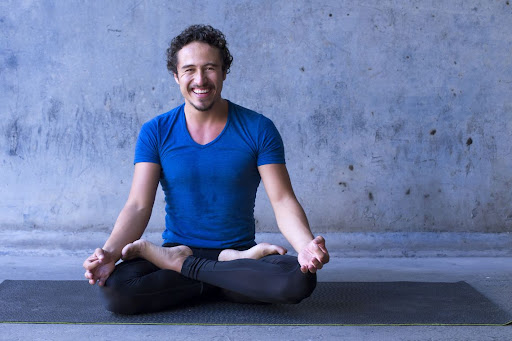The holiday season has found us and everyone I speak to agrees: it came up fast. Where happiness, gift-giving, joy, cheer are absolutely a part of the holidays, the shadow side of the holidays exists for everyone as well, especially for people suffering from chronic pain. Expressions of exhaustion, disbelief that the world is still struggling with the pandemic, fear, pain, loneliness, and even guilt and shame make persistent appearances in my daily conversations whether those conversations are social, with colleagues, or with patients.
People living with chronic pain experience this and more, as our world has been forced to shift in response to the COVID-19 and social interactions have suffered, care access has varied, and our ability to predict tomorrow has been challenged. In a recent report issued by the CDC (2018) chronic pain is estimated to impact nearly 50 million adults in the United States, a prevalence of approximately 20.4%. This means that for every 5 people you encounter over the holidays, whether at the grocery store, in traffic, at family gatherings, 1 in 5 is likely experiencing chronic pain. It is likely that you, reading this article, have experienced or are living with chronic pain.
If we want to find it, we can find negative interactions, judgment, and social behavior all around us. Our inner saboteurs are in overload, our allostatic loads are at or over capacity, and finding the energy for self-compassion, and patience with the world around us can feel harder than ever before.. As we spend time with our friends and family this Thanksgiving weekend, we can also help ourselves, others, and our friends trying to navigate this while managing chronic pain, by practicing three easy daily rituals.
Gratitude
Daily expressions of gratitude are linked to joy and have been demonstrated in the research to have a positive impact on our emotional and psychological well-being. Research is emerging suggestive that gratitude may also have an impact on our physical well-being (Ong et. al 2021 & Jans-Baken et al. 2019). Simple tasks of writing down what you are grateful for, vocalizing gratitude for a loved one, friend, or complete stranger, or writing a gratitude letter are a few suggestions on how to practice this daily. Even if you feel that you are out of energy for an intense workout, find the time for a pleasant walk and find gratitude in the movement, the environment, and the positive impact that exercise has on your body.
I don’t have to chase extraordinary moments to find happiness – it’s right in front of me if I’m paying attention and practicing gratitude.“ – Brené Brown
Social Respect
Speaking for myself, I find it harder and harder with the ongoing pandemic and the fear, uncertainty, and exhaustion that brings to our lives to remember that we need to let go of the small stuff. That we cannot entirely own any story but our own, and that getting frustrated at times is easier than smiling. If I think that I am experiencing stress, I can count on the person next to me feeling the same way. This means practicing compassion for others right now, is more important than ever. For our friends and family in chronic pain, evidence reveals that sociological pain, which we can find at every corner, is reciprocal with experiencing physical pain (Zajacova 2021). It is speculated that one can have a causative or exacerbative effect on the other. Feeling excluded, discriminated against, unaccepted socially can create a social pain, and that may perpetuate current or new physical pain. Physical chronic pain especially leads to exclusion socially, skepticism from providers, family and friends, and feeling disrespected, distrusted, even dismissed at times. Layering on to the already sensitive situation between our social environment today and the impact on our physical health, experiencing pain is also interwoven with politics, public policy, and our pandemic and the restrictions on care, access, and an uncertain health care environment in general (Zajacova 2021).
Awareness alone of these relationships between social and physical pain has the power to help shape how we interact with a person at the coffee shop, at work, in a family gathering, or even just trying to complete your holiday shopping. Remembering that social media and text messaging is just as personal as being face to face is crucial when we decide how we want to speak to a friend, our children, or comment on another person’s post may help us make the difference in someone’s life between feeling chastised, shamed or excluded and being uplifted, or accepted for the experience that someone is expressing. Knowing that our words and actions have the power to be the trigger for social and physical pain, or the antidote helps us be responsible in our social interactions.
“Each one of us must take responsibility for our own lives, and above all, show respect and love for living things around us, especially each other.” – Jane Goodall.
Practicing Compassion
Self-compassion and compassion for one another have powerful potential. Perfectionism, judging, self-criticism are easier to find than forgiveness, and the experiences of letting go of the small stuff. If you are seeking ways to learn more about self-compassion, check out www.selfcompassion.org, Dr. Kristen Neff’s website and an excellent collection of resources to start being kinder to yourself.
Research shows that demonstrating self-compassion can activate the “soothing” systems in our brains, which as a result help us to lower perceptions of pain, and experience improved well-being. Pulling away from what we feel that we have to do, and finding time for exercise, movement and meditation can help us feel better overall. Even practicing 3 minutes of compassion focused imagery and grounded breathing has been shown to reduce our body’s response to pain (Maratos and Sheffield, 2020) In the European Journal of Pain, a study of a mindful self-compassion program for chronic pain, practice of self-compassion showed secondary outcomes of lowered anxiety, pain interference, pain acceptance, and pain catastrophizing (Torrijos-Zarcero et. al, 2020).
Movement and exercise are also pathways to better emotional regulation and natural pain-reducing effects on the body. Pick the type of exercise that feels the most manageable to you on any given day and try to perform it for 30 minutes: yoga, walking, golf, tennis, bouldering, biking – you name it! The goal is to find an activity that is an escape from the every day: so instead of considering walking to clean your house your exercise, choose to go to a park that you love instead. Selecting a daily activity to perform for 30 minutes is an excellent baseline recommendation and starting point.
“Self-compassion is simply giving the same kindness to ourselves that we would give to others.” – Christopher Germer
Resources:
Torrijos-Zarcero et. al. Mindful Self-Compassion program for chronic pain patients: A Randomized Controlled trial. August 2020, European Journal of Pain, DOI: 10.1002/ejp.1734.
Lilian Jans-Beken, Nele Jacobs, Mayke Janssens, Sanne Peeters, Jennifer
Reijnders, Lilian Lechner & Johan Lataster (2019): Gratitude and health: An updated review, The Journal of Positive Psychology, DOI: 10.1080/17439760.2019.1651888
Maratos, Frances A. and David Sheffield. Brief Compassion-Focused Imagery Dampens Physiological Pain responses. Mindfulness (2020) 1:2730-2740. http://doi.org/10.1007/s12671-020-014085-5
Ong, A.D. et al. Positive affect and chronic pain: a preregistered systematic review and meta-analysis. Pain. 2020 June ; 161(6): 1140–1149. doi:10.1097/j.pain.0000000000001828.
Zajacova, Anna, Grol-Prokopzyk, Hanna, and Zachary Zimmer. The Sociology of Chornic Pain. Journal of Health and Social Behavior 2021, Vol. 62(3) 302–317.

